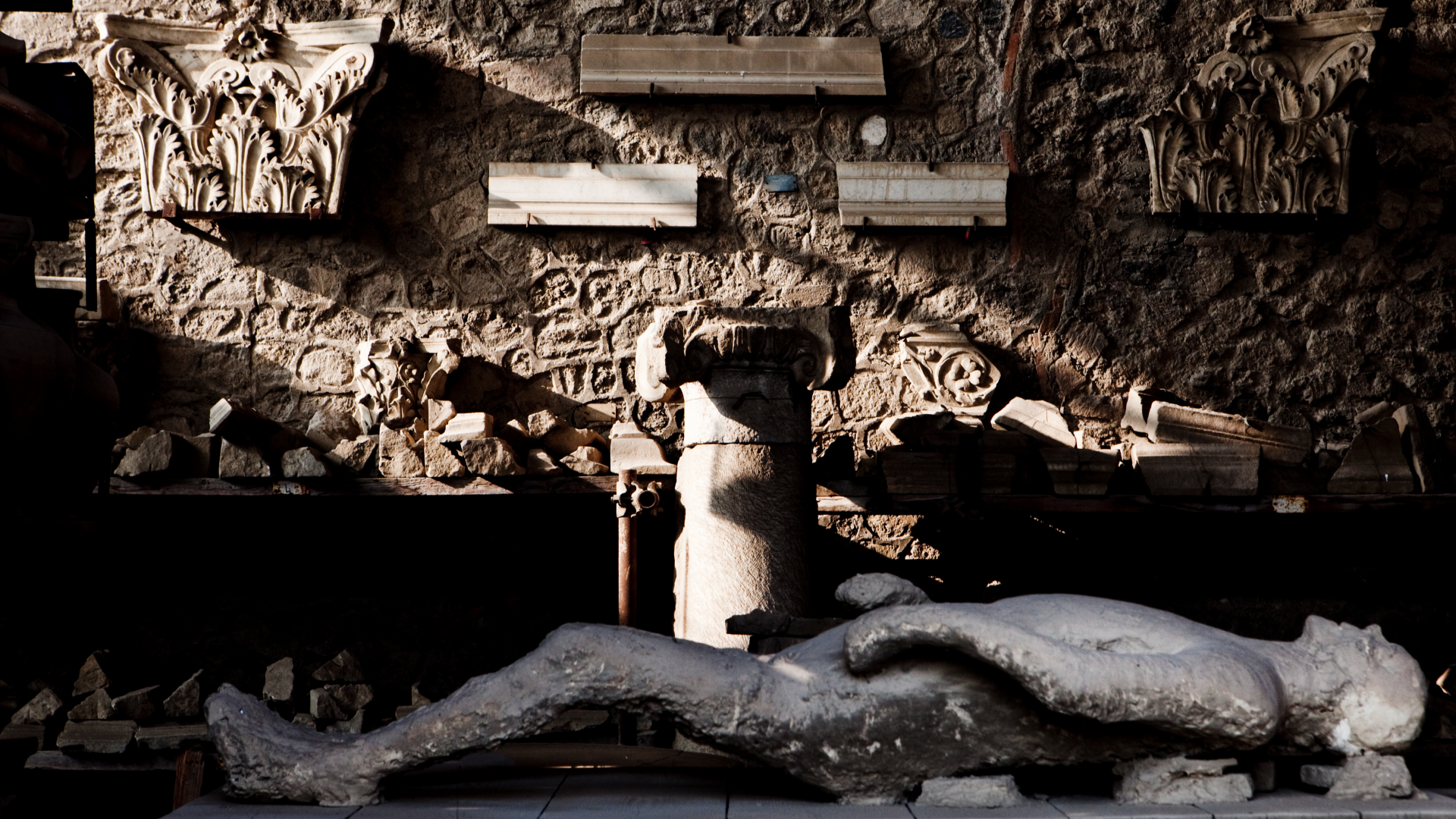Top 10 Beasts and Dragons: How Reality Made Myth
Bizarre beasts
Why you can trust Live Science
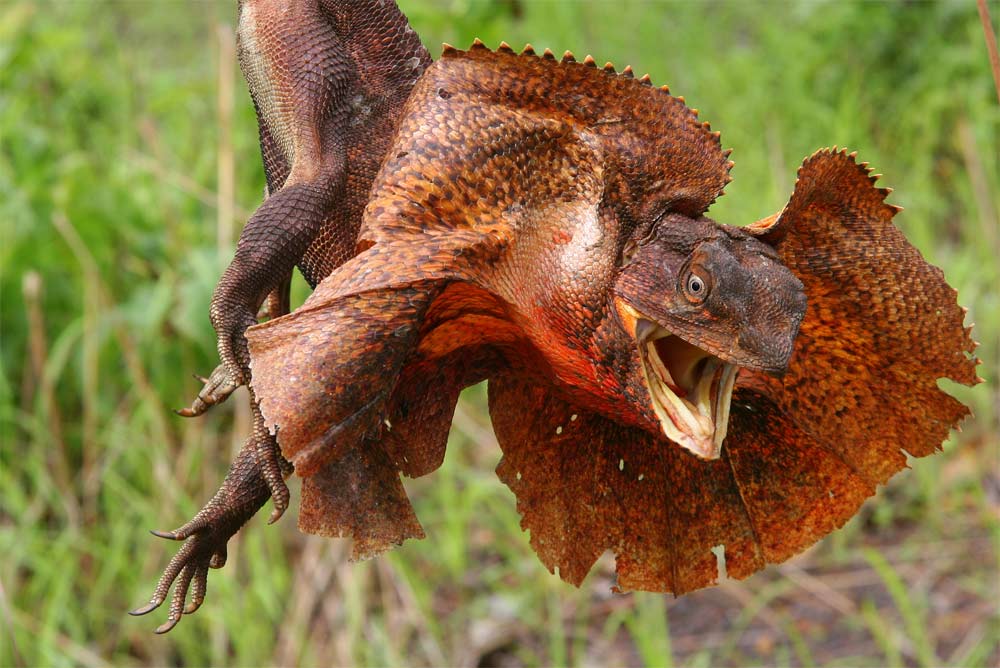
Dragons are awe-inspiring patchwork creatures found in the myths and legends of cultures all around the world. In Europe, they are nightmarish fire-spewing reptiles, large and lizard-like, with the forked tongue of a snake and wings like a bat. In the legends, they are reviled and feared because they liked to imprison maidens, destroy villages and hoard over mountains of gold.
In the ancient cultures of Mexico and South America, a divine feathered serpent known by various names was believed to renew the world after each cycle of destruction.
In China, dragons are amphibious creatures that dwell in oceans, lakes, rivers and even raindrops. They are revered as life-giving symbols of fortune and fertility, capable of unleashing rain in times of drought. They are animal mosaics, possessing the body of a snake, the scales of a fish, the talons of an eagle, the antlers of a stag, and the face of a gilin -- another mythical creature that resembles a deer but whose body is wreathed in flames.
Despite their differences, many of the mythical dragons found throughout the world all began as vague serpentine ideas modeled after real creatures, beginning with a snake or some other fearsome reptile. Over time, they acquired more definite and exotic shapes as they absorbed the hopes and superstitions of the local people and borrowed the traits of local animals.
Our short list of creatures and natural phenomenon reveal what may have inspired the look of dragons as well as creatures that are truly dragon-like.
Chinese Alligator
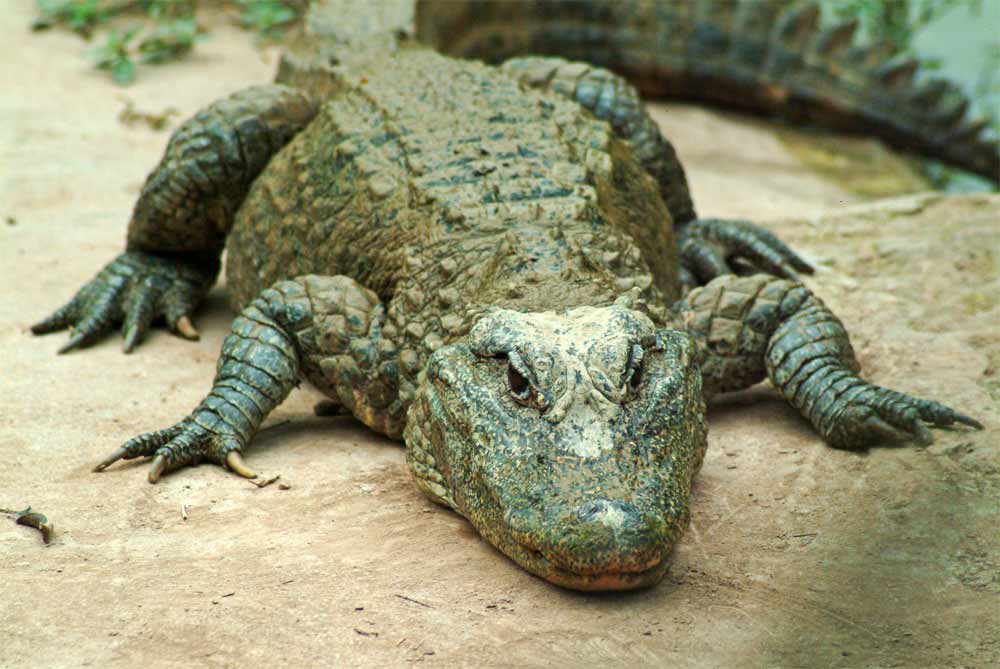
Chinese alligators may have been one of the inspirations for the Asian dragon. In Chinese mythology, dragons were closely associated with water: They were the guardians of life-giving rain, but in times of fury were also capable of unleashing punishing floods. Chinese alligators can grow to a length of about 6 feet, and can often be found floating just below the surface of the water, where they stealthily await their prey. The Chinese alligator is one of the most endangered reptiles in the world.
Frilled Dragon

The frilled dragon is a small lizard found in the forest and woodlands of northern Australia. Like its name suggests, an expandable frill surrounds the dragon's head and neck, which it can open like an umbrella when frightened. If this isn't enough to scare off an enemy, the frilled dragon will rear up on its hind legs and run away-- but rather than fleeing with its tail tucked between its legs, the dragon can simply leave it behind to distract a predator.
Bearded Dragon
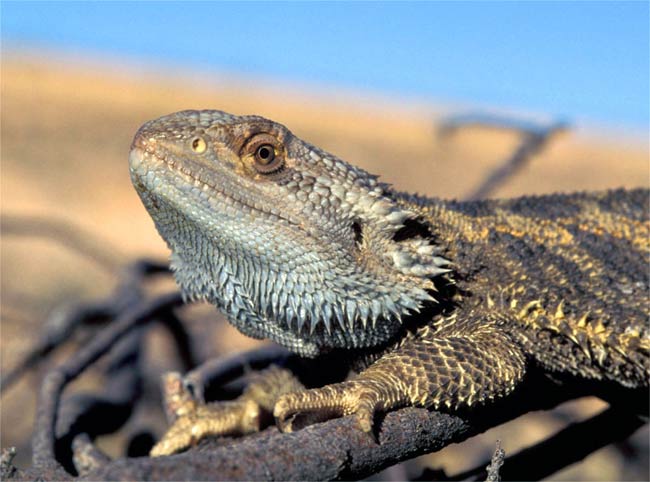
The bearded dragon is also native to woodlands of Australia. It has numerous spiky appendages protruding from the skin around its head, and can inflate a pouch under its chin to make itself look more menacing. The bearded dragon can change shades of color, from light to dark, to reflect certain emotional states or to help regulate its body temperature. Like the frilled dragon, it can also rear up on its hind legs and run away.
Python
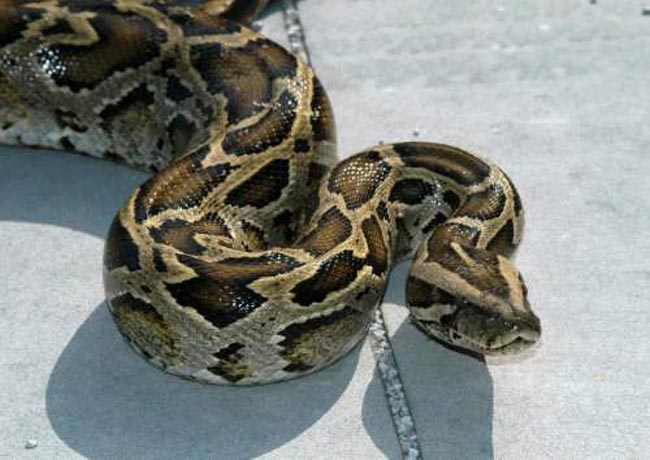
Pythons are among the largest snakes in the world, and the reticulated python of India may have been one of the inspirations behind dragon lore in ancient times. Pythons are constrictor snakes, which means they squeeze to death the birds and small mammals that they feed on. While traveling through India, the Roman naturalist, Pliny, claimed to have seen a dragon so large it could strangle an elephant. Pliny was most likely describing the reticulated python, a snake that can grow to a length of more than 30 feet. In Pliny's tale, the dragon also dies because it is crushed by the defeated elephant.
Flying Dragon
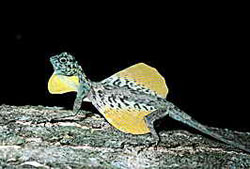
The flying dragon of Southeast Asia are small lizards that can glide between trees using wing-like folds of skin. They can grow up to 7 inches and they eat mainly ants and other small insects. Their wings are supported by five to seven ribs that extend from their bodies, and they can glide for distances of up to 30 feet. The wings are often brightly colored and patterned with stripes and dots, but they can fold their wings and blend into their surroundings when they want to remain inconspicuous.
Komodo Dragons
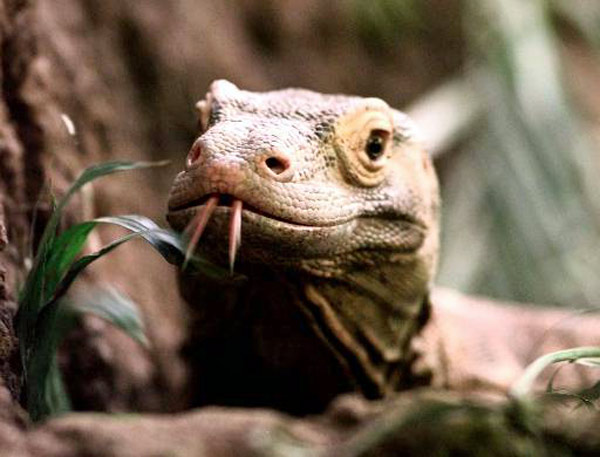
The Komodo dragons of Indonesia are the world’s largest living lizards. They can grow to 10 feet long and can run as fast as a dog for short stretches. Komodos hunt live prey and are capable of ambushing creatures much larger than themselves. They have a thickly muscled tail and a strong bite. Even a slight graze can be lethal and cause severe infection because of the septic bacteria that live in their saliva. Komodo dragons would have been a great candidate for the inspiration behind the mythical dragons in Europe -- except that Europeans didn't discover them until 1910.
Megalania Prisca
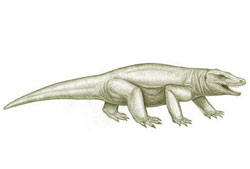
Although stockier and shorter than the Komodo, megalania prisca was a much larger animal. It grew to lengths of up to 30 feet and weighed nearly 1,000 pounds, making it the largest lizard the world has ever seen. Megalania roamed the Australian wilderness during the last Ice Age, and could ambush creatures twice its size and 10 times its own weight, killing them with its curved serrated teeth and large claws. It is very appropriate then that in Latin, its names means "ancient giant butcher."
Pterosaurs
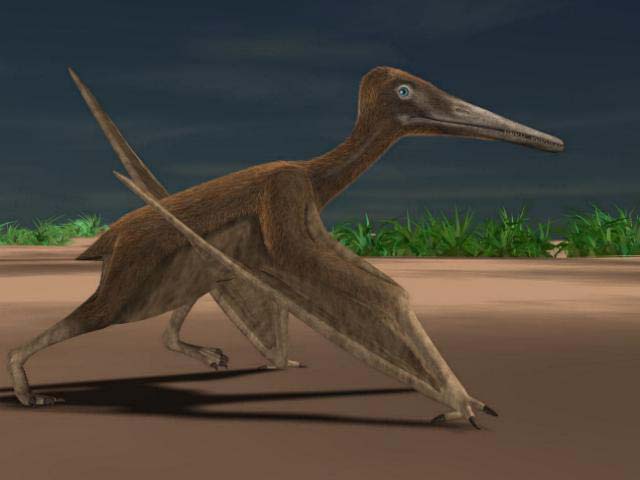
Of all the creatures that ever lived, pterosaurs probably most closely resemble the dragons of European legend. Reptilian and featherless, pterosaurs flew on wings of hide that were supported by a single long and boney finger. The smallest pterosaur was the size of a sparrow, while Quetzalcoatlus -- named after the Aztec god -- had a wingspan of more than 40 feet, making it the largest flying creature ever. Quetzalcoatlus is shown here.
Sea Dragon
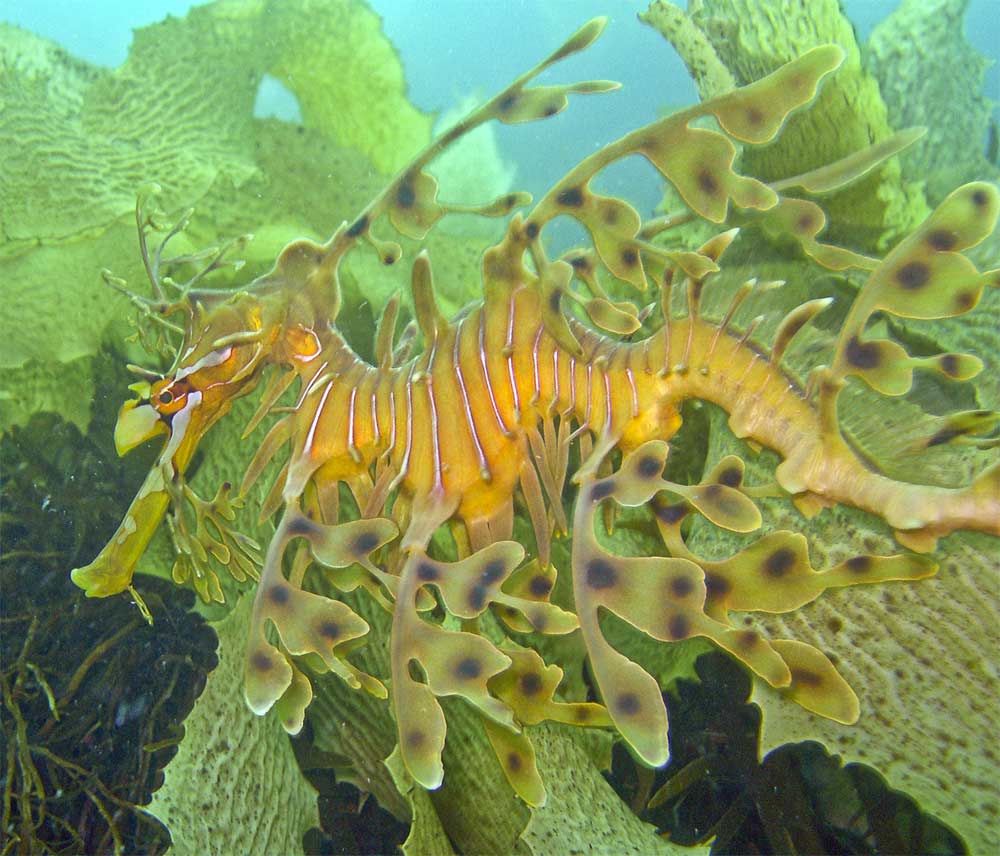
The sea dragon is a close relative of the sea horse. It can be found on the cool rocky reefs of southern and western Australia. While technically a fish, the sea dragon does not swim so much as sway as it imitates the movement of the seaweed and seagrass among which it makes its home. The sea dragon possesses leaflike fins and appendages that are nearly transparent, and a tube-like mouth that it uses to suction in the larval fishes and small shrimp-like crustaceans that it feeds on.
Surprise Entry: Comets

Dragons were often depicted as winged serpents with long tails, and they were often viewed as harbingers of doom or fortune. The name of the Aztec god Quetzalcoatl literally means "feathered serpent." To people living in ancient times, a comet streaking through the skies with an icy tail millions of miles long would have closely resembled such a creature. This image is of comet Hyakutake. If comets were the inspiration for some dragons, it could help explain why dragons are ubiquitous in the myths and legends of so many different cultures in all corners of the world.
Get the world’s most fascinating discoveries delivered straight to your inbox.
